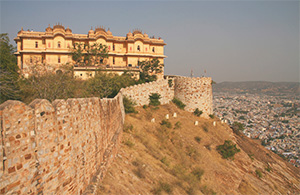City Palace, Jaipur, which includes the Chandra Mahal and Mubarak Mahal palaces and other buildings, is a palace complex in Jaipur. Palace architecture in Rajasthan is simple in design, elaborate in execution and magnificient in appearance. The City Palace complex, an integral part of the Walled City, is a fine example of this pattern. It is a sprawling enclosure with many courtyards, gateways and gardens. The credit for the urban layout of the city and its structures is attributed to two architects namely, Vidyadar Bhattacharya, the chief architect in the royal court and Sir Samuel Swinton Jacob, apart from the Sawai himself who was a keen architectural enthusiast. The architects achieved a fusion of the Shilpa Shastra of Indian architecture with Rajput, Mughal and European styles of architecture.
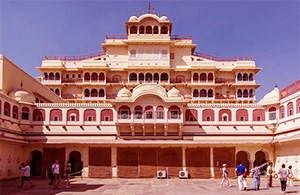
Jantar Mantar was built by Maharaja Sawai Jai Singh II (1688-1743), who became the ruler of Amber at the age of 11 after his father’s death. Maharaja Jai Singh had a great interest in mathematics, architecture and astronomy. He built five Jantar Mantar’s in the cities of Delhi, Jaipur, Mathura, Varanasi and Ujjain during the years, 1724-1735. Of these, Jantar Mantar at Jaipur is the greatest and the best saved. The city of Jaipur was named after Maharaja Sawai Jai Singh. It was built from local stone and marble, each instrument carries an astronomical scale, generally marked on the marble inner lining. Bronze tablets, all extraordinarily accurate, were also employed. Thoroughly restored in 1901, the Jantar Mantar was declared a national monument in 1948.
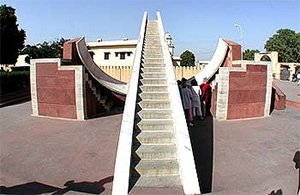
It was built in 1799 by Maharaja Sawai Pratap Singh, and designed by Lal Chand Ustad in the form of the crown of Krishna, the Hindu god. Its unique five-storey exterior is also akin to the honeycomb of the beehive with its 953 small windows called jharokhas that are decorated with intricate latticework. The castle is a five-story pyramidal molded landmark that climbs to a height of 50 feet (15 m) from its high base. The main three stories of the structure have an extent of one room width while the first and second carpets have yards before them, on the back side of the structure. It was built up of red sand stones, this magical structure, which is otherwise called the palace of winds differs from any other monuments one could see in the Pink City.
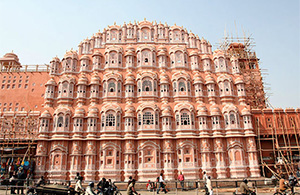
Jal Mahal (meaning "Water Palace") is a palace located in the middle of the Man Sagar Lake in Jaipur city, the capital of the state of Rajasthan, India. The palace and the lake around it were renovated and enlarged in the 18th century by Maharaja Jai Singh II of Amber. Many sightseers visit this royal residence consistently to appreciate the perfect perspective and regular excellence. From the edge of the lake, one can employ the Rajput-style watercrafts manufactured by the watercraft creators of Vrindavan, and delicately cruise to the palace. The visitor density going to the landmark stays high all around the year however the rainy season of the year suits the best to visit here. The lake gets the most extreme water level throughout the downpours.
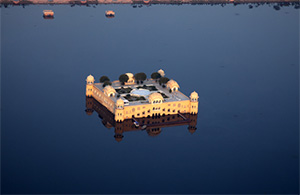
The Amer Fort, situated in Amber, 11 kilometers from Jaipur, is one of the most famous forts of Rajasthan. Amer Fort was built by Raja Man Singh I. Amer Fort is known for its artistic style of Hindu elements. The structure has four separate parts, each with a separate entrance. The primary entrance to the post is through the 'Suraj Pol' or Sun Gate which opens up into the main courtyard. It will be a delightful experience to explore the stunning fortification on tour to Jaipur. Jaipur is generally well associated via air, street and train with all the real urban communities of India.
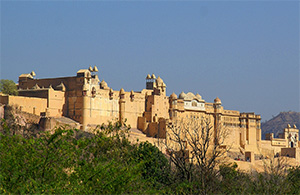
Nahargarh Fort stands on the edge of the Aravalli Hills, overlooking the pink city of Jaipur in the Indian state of Rajasthan. The fort was originally named Sudarshangarh, but it became known as Nahargarh, which means 'abode of tigers'. It was built in 1734 by Maharaja Sawai Jai Singh II. The fortification was further reached out in nineteenth century by the successive rulers and is presently associated with Jaigarh Fort. Nahargarh Fort shows a fine mix of Indian and European structural planning with its massive walls wonderfully embellished with engraved sketches and long halls associating the palatial suites.
